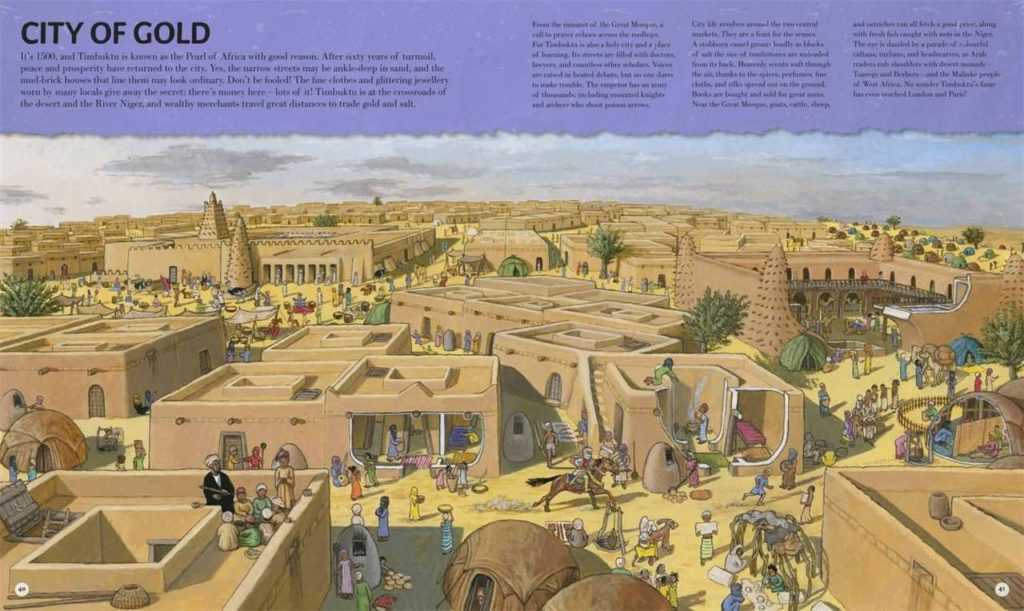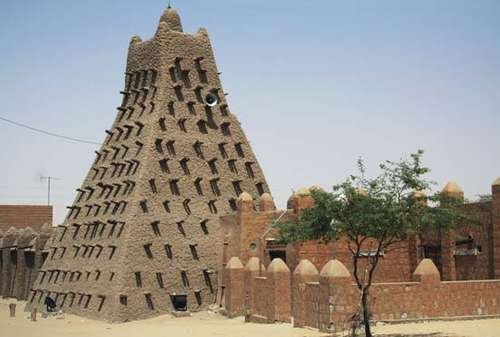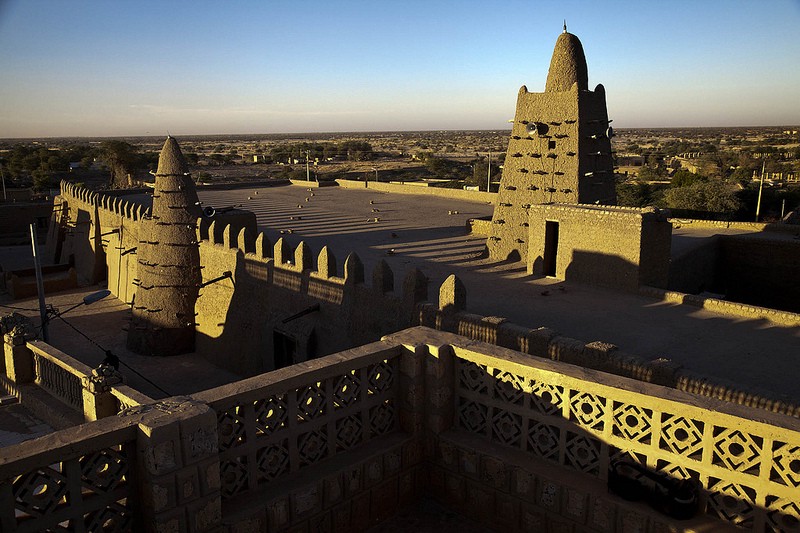Timbuktu located at Sahara, Mali, West Africa was Founded in the 10th century. It is called as the point of no return for many an intrepid traveler.
During the fourteenth century the legend of Timbuktu as a rich cultural centre spread through the world. The beginning of the legend can be traced to 1324 when the Emperor of Mali made his pilgrimage to Mecca via Cairo.
In Cairo the merchants and traders were impressed by the amount of gold carried by the emperor who claimed that the gold was from Timbuktu. Furthermore, in 1354 the great Muslim explorer Ibn Bakuta wrote of his visit to Timbuktu and told of the wealth and gold of the region. Thus Timbuktu became known as an African El Dorado, a city made of gold.

In the 1700s and early 1800s, many explorers attempted to reach Timbuktu but none returned. Many unsuccessful and successful explorers were forced to drink camel urine, their own urine, or even blood to attempt to survive the barren Sahara Desert.
The first European acknowledged to have reached Timbuktu was Scottish explorer Gordon Laing. He left Tripoli in 1825 and traveled for a year and a month to reach Timbuktu. On the way, he was attacked by the ruling Tuareg nomads and was shot, cut by swords, and broke his arm. He recovered from the vicious attack and made his way to Timbuktu and arrived in August 1826. He was unimpressed with Timbuktu, which had become simply a salt trading outpost filled with mud-walled homes in the middle of a barren desert. Laing remained in Timbuktu for just over one month. Two days after leaving the town, Laing was murdered.

In the late 1800s, France took control of the Mali region and decided to take Timbuktu away from the control of the violent Tuareg who controlled trade in the area. The French military was sent to occupy Timbuktu in 1894. Under the command of Major Joseph Joffre (later famous World War I General) Timbuktu was occupied and became the site of a French fort. Communication between Timbuktu and France was difficult, making Timbuktu an unhappy place for a soldier to be stationed. Nonetheless, the area around Timbuktu was well protected from the Tuareg so other nomad groups were able to live without fear of the hostile Tuareg.

In 1960, Timbuktu became part of the independent country of Mali and in 1988 was designated a United Nations World Heritage Site. Efforts are underway to preserve and protect the city, especially its centuries-old mosques.
Source: https://www.pilotguides.com/



Comment here